French Toast, French Kisses, and the Art of Flâneuring
National pastime of people watching makes it into the National Geographic, greeting friends the French way, and embracing la joie de vivre
Nice la Bella
Two summers ago, I visited France for the first time. Specifically, the southeast coast of France along the French Riviera - Nice, Cannes, Antibes, Eze, and Monaco.
Let me tell you that Nice easily skyrocketed to one of the top five cities I’ve ever visited. It wasn’t just the weather, beaches, food, architecture, scenery, fashion. It was deeper than that. It was in what I witnessed about the French - how they carry themselves, how they speak, how the eat, and how they live. Nice was indeed nice!
There’s a wonderful book by Mireille Guiliano, former executive at Veuve Clicquot (one of the largest French champagne companies) titled “Women, Work & the Art of Savoir Faire”. Savoir faire means suavity, grace, and tactfulness. It really highlights the way in which the French approach work, life, relationships, and self.
It’s an incredibly refreshing read and she doesn’t sugarcoat anything. I’ve read several of her books and she’s like a fairy godmother to me at this point.
That book (which I read prior to visiting Nice) along with my actual visit to Nice got me thinking - what do the French do different from us here in the U.S. and what aspects of their way of life can we emulate? Well, let me tell you - they do a LOT of things differently (don’t even get me started on their social safety net, healthcare, and employee regulations, that’s a whole other topic).
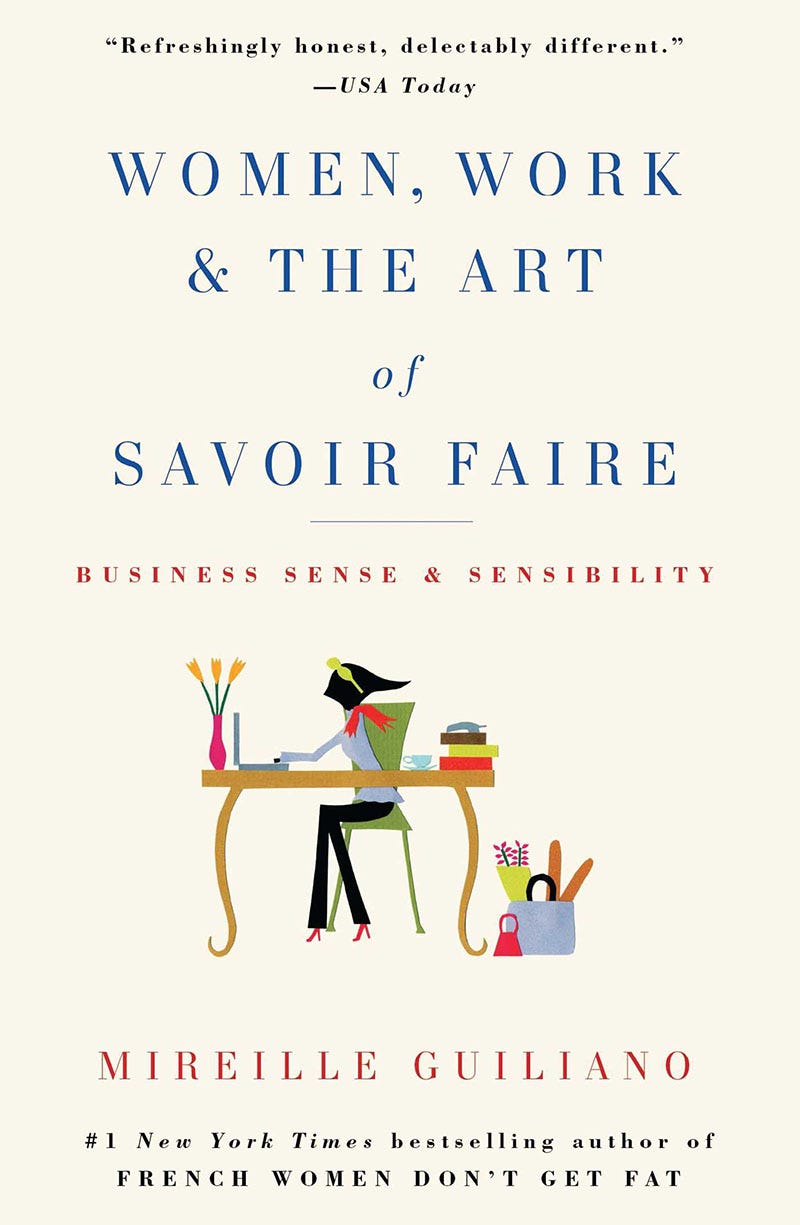
I read her book in a single sitting. The poise, elegance, and ease of not only her prose but of the French way of life were incredibly alluring. One of her other books is “Why French Women Don’t Get Facelifts”. And you know what the secret is? Boil a kilo of leeks and drink the water (not kidding!). I’ll have to try this out myself and report back.
I Brought Back a Magnet + Some Ideas
That’s not to say France and French people aren’t dealing with their own societal problems but in the areas where the U.S. is falling short, France seems to be thriving. I’ve seen (and read) an endless number of articles with a variation of the title “ways to live like a French woman”. I’ve yet to see a title that reads “ways to live like an American woman” and wasn’t satirical…
I learned a lot from not only Guiliano’s books but also my trip. Let’s just say I brought back something that’s lighter than a magnet but attracts a lot more ideas.
The French Art of People Watching
I’ve observed that a favorite French pastime is people watching (with savoir faire of course). In the U.S. that might be seen as weird, creepy, “stalkish”, but really all it is - noticing the people, conversations, and life all around you. In order for this to work, people have to be on foot and streets have to be relatively narrow.
The American way of life is almost the antithesis to this. The U.S. is more individualistic than ever, and rate of loneliness and depression are at record levels. This is in part due to our horrible city structures and suburban sprawl but also in part due to our social structures and norms. Most people in the U.S. drive and streets are as wide as the ocean - we are physically more distant from others. In New York, where almost everyone is on foot and bumping into others, almost no one ever stops to notice those around them.
All Seats Face the Street
Noticing those around us really puts things in perspective. We are all one out of almost 8 billion individuals and stopping to take a look around is like stopping to smell the flowers.
You might have noticed from photos or your travels that in French coffee shops all the seats point outward and in the direction of the street. The seats don’t face the table and people don’t face each other. They physically turn to face and embrace the rest of the world. That’s on purpose. It forces you to notice the people, things, and places around you. This is such a big national pastime that it was covered in the National Geographic:
“In this city, it’s all about seeing and being seen…In Paris, even leisure is a craft”.
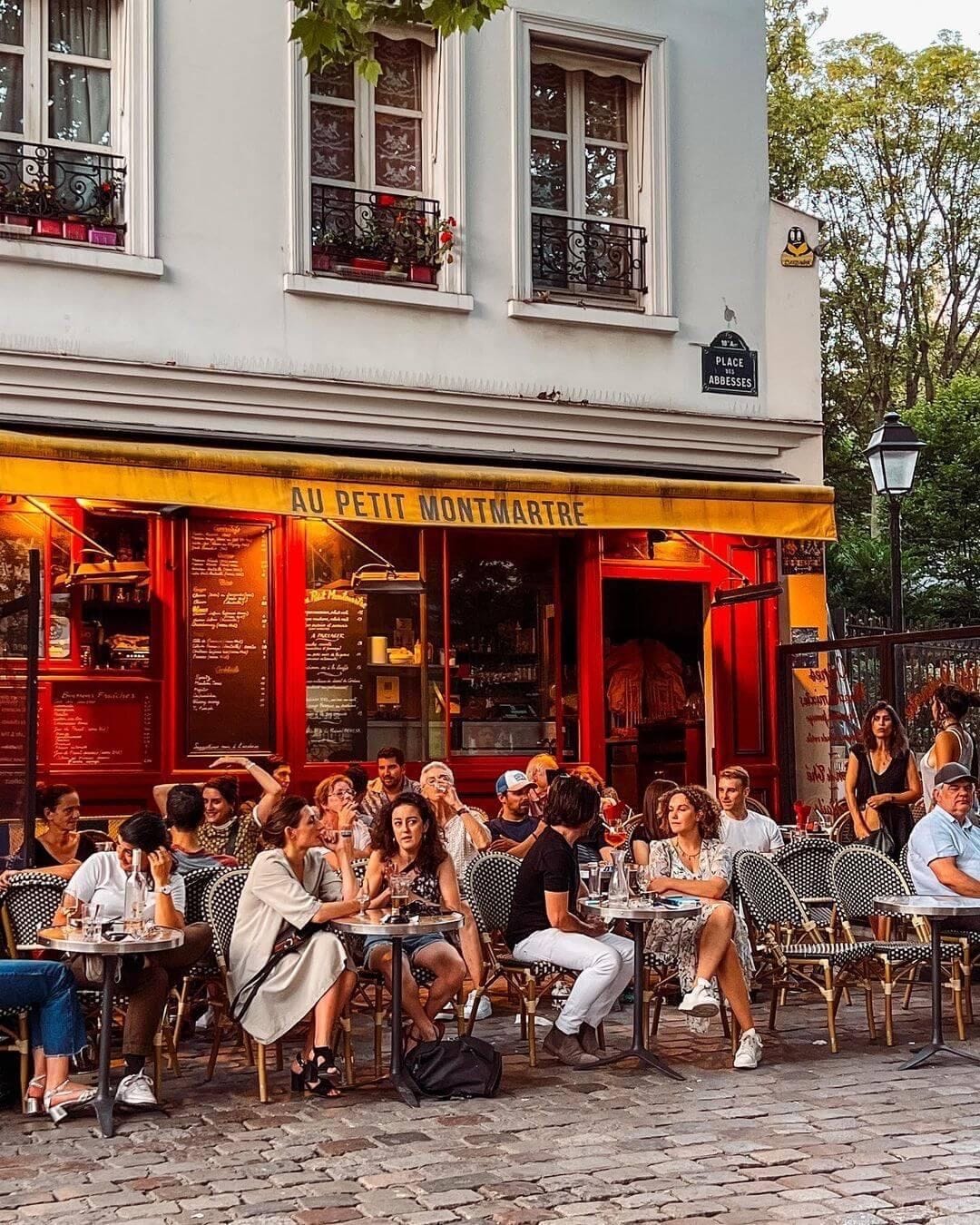
The French have mastered how to people watch tactfully, subtly, and discreetly. They’re not ogling or audibly commenting about people. They simply sip their coffee, engage in conversation with their friends (or a little gossip), and casually scan the scene around them, noticing passersby, their conversations, style, and demeanor.
Flâneur Away
In the U.S. we’re often fed and propagated this idea that if we are not being productive with every single minute of our day then we are doing something wrong. Cue the endless “CEO’s 3AM morning routine”.
The French embrace being a flâneur. A flâneur is an idle person who strolls about without purpose. A person of leisure. There is often this connotation that flaneuring is a waste of time. However, it’s been backed by research that simply walking around is not only good for your health, stress levels, but also creativity, and overall happiness.
You don’t need a 3AM morning routine, cold plunge shower, or 25 supplements to get in tip top mental and physical shape. Just put on some shoes, open the door, and head outside.
Flâneuring is an art and in fact a very intentional way of being deliberately aimless to recenter, rejuvenate, and get inspired.
French Kisses (no, not those kind)
The French often greet each out with a bisous (air kiss) on the cheek. It’s how they show politeness. This is where the savoir faire comes into play. They don’t do this with strangers. La bise is only reserved for friends, family, and anyone else whom you are as closely acquainted with. Handshakes are definitely the go-to for any professional interactions or first-time introductions.
Touch is a powerful glue for social connections. It definitely doesn’t have to be weird or creepy. That’s just how the French are!
New York, New York
New York is notoriously bad when it comes to social connectedness. I love visiting New York but I romanticize the city every time I’m there. I forgive it for all its flaws because of everything it has to offer in the short few days I am there. I always see New Yorkers headed steadfastly to the subway, phone and coffee aptly in hand, briskly walking down the steps, and getting swept into a sea of people. Everyone is in their own element, their own little bubble.

People are always going from location A to B, there is no “in between”, no space where they can simply pause and examine what’s around them. Everyone exists in their own little bubble, not bothered by others nor paying any attention to them (it takes a lot to surprise a New Yorker…nothing they haven’t seen on the subway or on the streets). It’s natural that a city with over 8.5 million people (out of whom many are transplants) will be so individualistic. This is why I have a love-hate relationship with New York.
“Everything is a symbol…In New York or London, labels are what matter… [here] distinctions are more subtle: the construction of a shoe, the stitching on a handbag, the design on a scarf—all form a complex visual language through which Parisians communicate” (National Geographic).
Drink in Sips & Taste in Bites
The French have a bad reputation for being unfriendly or unwilling to help foreign tourists (especially in Paris I’ve heard). Not in my experience. Candidly, I would probably also be unfriendly to an American tourist committing the greatest fashion sin by wearing crocs and sandals all meanwhile yelling at his Google Maps and spinning in circle trying to find the Eiffel Tower (just look up, you’ll see it).
There are just certain manners and ways of being that the French are used to. It’s fair to think that when in France, do as the French do.
Any American-themed restaurant that I tried while in France was truly a caricature of American food and it was quite entertaining. Next time you travel, go to a restaurant that serves food from your region. You’ll have a laugh.
The French don’t eat to get full. They eat to experience good food and connect with their friends and family around a shared experience. They revel in the food they taste and wine they sip. I noticed that the portions there were considerably smaller (even a large coffee was a U.S. small). The French are also not crazy about fad diets like we are in the U.S. They keep it K.I.S.S.
Yes, they’ll indulge in some French toast (I think that’s actually French?), croissant, and maybe some wine, but it’s all in moderation.
Oat Milk? What’s That?
I would also be remiss not to mention that the quality of food in France is much better than that in the U.S. I think this is also a big contributor to the different relationships with food between the two countries. It bewilders me that every fruit and vegetable in the U.S. is always in season, 365 days a year. Yes, they’re flown in from a sunny state, but they’re also pumped with various chemicals to grow faster and bigger.
I remember walking into a local coffee shop and requesting oat milk (not lactose intolerant, just health-conscious choice). The barista looked at me like I was a circus performer! Cow’s milk it was…Truthfully the milk there did not give me the usual stomach-ache. I’m now afraid to even look up what we feed the cows in America.
Embracing La Joie de Vivre
You might not be able to summer in Nice every year, but you can surely embrace joie de vivre (enjoyment of life) from wherever you are in the world:
Get dressed, go to your favorite coffee shop, and do a little bit of people watching. Become an intentional flaneur.
Flirt with life. Be a bit carefree at times (heck at most times even). Carefree-ness doesn’t just happen to us when all in life is going well and all our ducks are in a row. It’s a choice that you first have to make deliberately before it becomes your de facto state.
Maintain savoir faire in all your interactions. Be mindful of others and of the social situation but don’t be scared to interact with those around you.
All things in moderation - drink in sips and taste in bites. Don’t over do it…with anything.
Finally, buy a beret. Fashion and style are a necessity and a way of life. This is non-negotiable.
Yours Truly,
Katarina
**P.S. If you are French (and even if you are not) I’d love to hear your thoughts and comments.




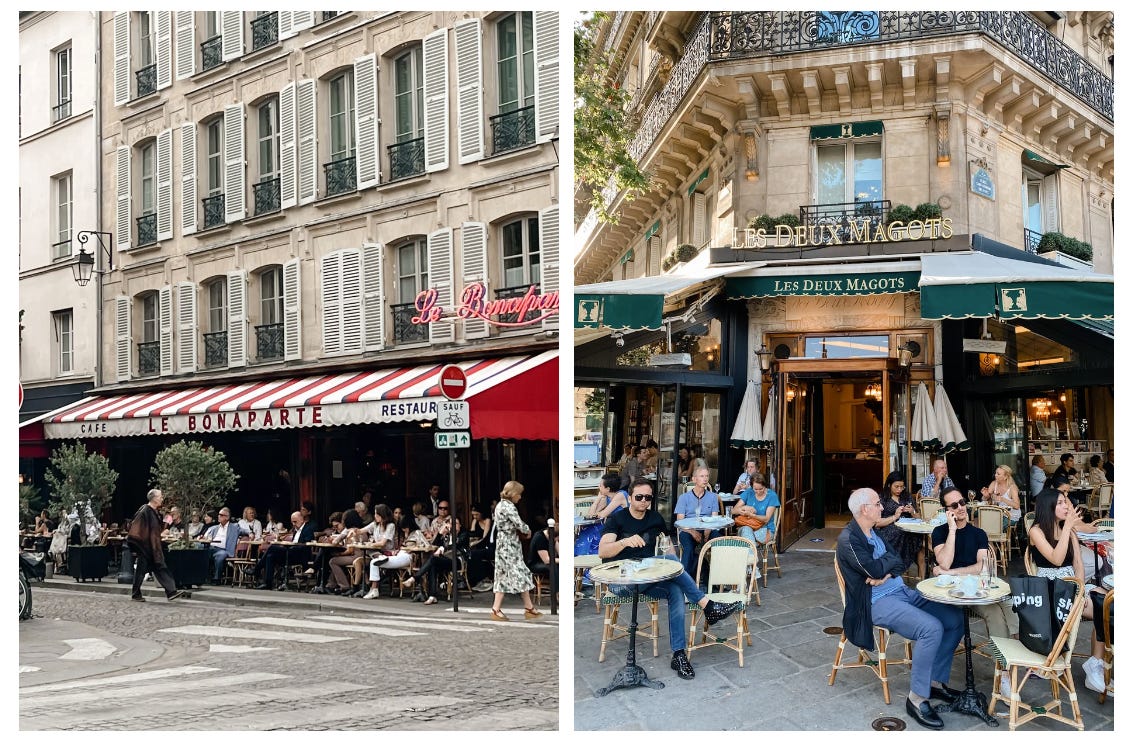
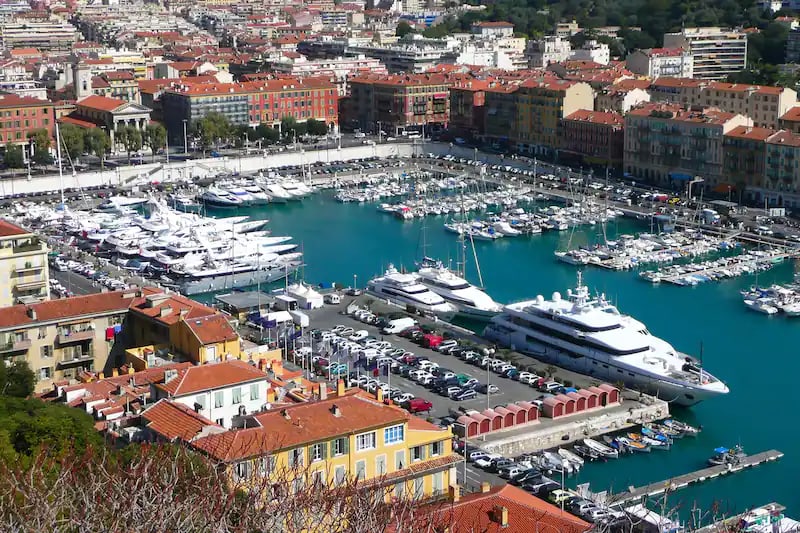

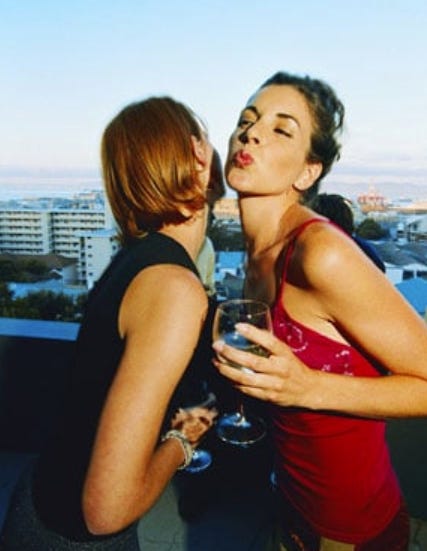



Loved reading this, lots of similarities with Spain as well. Especially interesting the bit about the cow's milk, I've noticed the same thing here, and with bread too (for those who are gluten intolerant they seem to generally be able to eat "regular" bread).
HI Katarina, I found my way to your Substack through Winston. You've got a lovely little space here you've created. I look forward to following along.